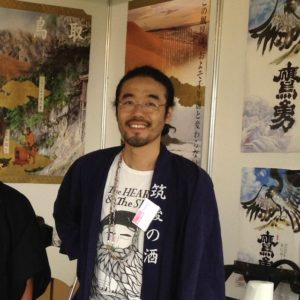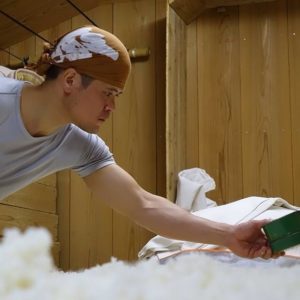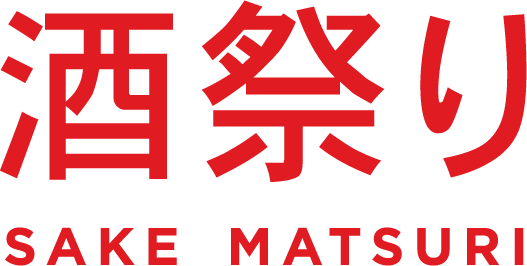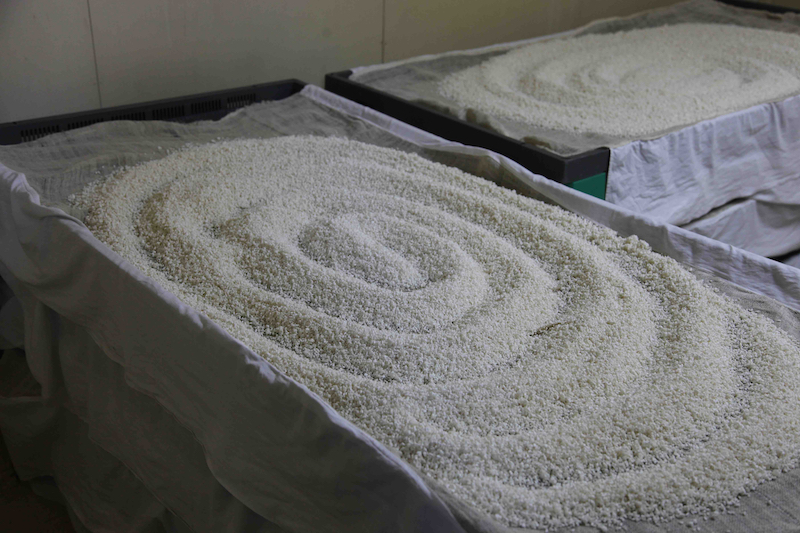Tell us about yourselves. How did you get into sake?
Sakenet’s sakes can be summed up in three words: Junmai, Kan (heated sake) and Jukuséi (aged sake). Junmai sake (sake made in the traditional way with rice and water only) develops the depth of its flavour through ageing, and brings out its flavours through heating.
To get to the roots of Sakenet and how we got into sake, particularly this type of sake, we must go back to 2001 to a small Yakitori bar in Sydney called Toriciya, and meet its eccentric owner/chef Mr Sakaé Takahashi.
Sakaé had been learning about sake through books and magazines. When he went to Japan he visited sake kuras (makers), sake events and many izakayas. He became infatuated with sake and sake culture. Naturally, he wanted to bring the fruits of his travels to Toriciya. Bringing these amazing craft sakes to Toriciya meant he had to go through the big Japanese food importing companies, which meant paying their markups. Sakaé wanted to serve great sake at a reasonable price (as is done in Japan).
Two very important books in Sakaés sake apprenticeship are Iza Junmaishu (Junmaishu Now) and Junmaishu wo Kiwameru (Mastering Junmaishu) by the legendary sake consultant Hiroshi Uehara. These books introduced him to many makers and restaurants/izakayas and led him deeper and deeper into the world of Junmai Kanzaké.
The ‘ersatz’ sake (sake made with less rice and lots of additives), developed to get through the rice shortage of WWII and the post war period, continued to grow even after the end of the rice shortage. Very few foresaw that this kind cheap, low quality, mass produced sake would bring about the decline of sake consumption in Japan, and lead to Japanese people abandoning sake as the national drink.
Realising the plight of sake, Mr Uehara, who was technical advisor to several makers in Tottori prefecture, encouraged and assisted them in the revival of Junmai sake making. In Saitama prefecture, Shinkamé Shuzō had been focusing on Junmai sake making since the ’70s and in 1987, against pressure from the government, they became the first all Junmai Sake maker since the war. The head of Shinkamé (and Godfather of Junmai sake) Mr Yoshimasa Ogawahara began to actively support and advise other makers who wanted to focus on Junmai sake making. Both believed in the traditional style of sake that opens up its flavours through ‘Okan’ (heated sake) and develops its flavour through ageing. Later these two would meet and create an association for the revival of Junmaishu. The decline of sake has been devastating on the industry, and has drastically reduced the number of makers, however for those who switched to Junmai-based sake making the impact has been little to none. In 2015, 25 years after they created the association, Junmai sake was finally being recognised.
When Sakaé got involved in with the association in 2005, the fragrant chilled Ginjō was gaining in popularity and the association came to focus not just on the revival of Junmai but also traditional sake culture ‘Kan-zaké’ (heated sake). Much more wine-like sakes began to appear and even as sake became more diverse, Junmai sake was less than 10% of total sake production, and sake consumption in general was still in decline. Sakaé wanted to do more to help spread the work of the association and the Junmaishu he loved so much. In 2008 he started Sakenet Australia and began importing and sharing Junmai sake with his adopted home Australia.
Taka, Sakaé’s son in law, has been involved in Sakenet from the beginning, creating the website and the online shopping system. In 2011, he spent a year travelling around Europe and in 2012 officially joined the Sakenet team. Taka grew up in a small paper industry town in Ehime, Japan. There were two sake makers in the town so from a young age he was aware of sake, and the culture of sake and sake making. He has a natural love of sake, but joining Sakenet, working with sake on a daily basis, experiencing the life of a kura-bito (sake maker) with Asahikiku really took it to the next level.
Sakaé’s eldest son, Rey, was studying Chinese and Kungfu in Fuzhou China when Sakenet started. With the death of his master in 2013, he returned home to help the Sakenet business, making a brief stop over in Tottori Japan to study sake making and sake culture. He spent a year with Hiokizakura working as a kura-bito.
In 2016, Sakaé retired from Sakenet and handed over the reins to Taka and Rey. Now, more than ever, our focus is on Junmai, Kan and Jukusei, the traditional sake of Japan, and sharing this amazing culture with the people of Australia.

Masahiro “Taka” Takahashi
Tell us about your importing business. Which styles, producers, regions, etc. do you seem to focus on?
With regards to styles and producers, we deal with producers from all over Japan, however since the Junmai Jukusēi Kanzaké renaissance started in Tottori, we have a lot of producers from the Sanyin region(Tottori and Shimané prefectures) and Western Japan in general. Most of our producers are members of the “Kuramoto Kōryūkai” or the “Zenryō Junmaigura wo Mezasu kai” (roughly translates to ‘Association of Saké producers aiming to be all Junmai sake producers’) Our main conditions for choosing sakés, is that it’s hand made Junmai. It tastes good when heated. It improves with ageing.”
What are the different styles of sake?
Traditionally the style of a sake was largely determined by the region and the Tōji (master sake maker) guilds that the local craftsmen belonged to.
Now we have special designations like Daiginjō, Ginjō, Junmai and Junmai ginjō, etc., to classify sakes according to raw materials and how they’re processed. You could also classify today’s sakes into two main categories, one being flavour-based and the other fragrance-based. However we believe the history of the past 100 years has had a big influence on the different sake styles of today.
The sake of the feudal Édo period is believed to have been quite sweet and rich (there’s no way to know for sure, but several makers have attempted to historical recreations of sakes by following recipes from the times, and the result was rich and sweet!). There are records of scientific analysis of sakes from the late 19th Century, the Meiji period, by English scientists and on paper they seem to be very dry and quite high in acidity. Shortly after, around 1910, sake making takes a big leap forward, as recent developments in microbiology are incorporated into traditional sake making techniques.
The disaster of WWII saw Junmai almost completely disappear from the scene, and all the skill and knowledge developed over centuries, lost…
In the late ’70s sake consumption in Japan begins a sharp decline. To put a stop to this, the industry starts a campaign to promote the tanrēi-karakuchi (light and dry) style. The tanrēi-karakuchi boom also introduced the fad of drinking sake cold. As Japan continues its economic recovery the more expensive Ginjō sake becomes popular, this leads to the popular belief (and we believe misconception) that the main characteristic of sake are the fruity and fragrant aromatics.
In the 21st century, the sake industry has been consciously trying to enter the ‘wine’ market by focusing more and more on the aromatics of Ginjō sake through development of specialist fragrant yeasts, and establishing the wine glass as the mainstream way to enjoy sake. New fruitier juicy Ginjō’s has made sake popular among younger people and women, two demographics that were not big drinkers of sake. Parallel to these trends has been a small number of makers bringing back pre-industrial techniques, and attracting attention to the rich full bodied but dry style of sake. These sakes didn’t just suddenly appear in 2010, but have been developed by small group of dedicated makers like Shinkamé and Mr. Uehara since the ’70s.
In summary, there are four main styles of sake:
- 1970 (late) – Tanréi-Karakuchi (light and dry)
- 1980(late) – Ginjō, and fragrant sakes made with fragrance specialist yeasts.
- 2010 – Sweet and juicy Junmai style.
- 2010 – Rich full bodied dry Junmai. This is a ‘retro’ style was originally popular in the late 19th century and early 20th century. It has been reborn since the 70’s.

Rey Takahashi
Which style is your favourite? Why? Do you have a favourite producer or region?
Sakenet is dedicated to deep full-bodied, flavour-based sakes. Taste is important, but we love makers who are tackling the challenges of the future of sake. Makers who remember the traditions and are working to express the traditional culture in a modern context.
Sake is known as Japan’s rice wine, but is it similar to wine? What are the core differences and similarities?
As a fermented alcoholic drink, in some respect sake is very similar to wine and beer, but there are also many differences. The main, and obvious, difference being the different ingredients and the challenges that go with fermenting those ingredients to produce alcohol in the form of a delicious beverage.
The historical background of sake plays an important role in shaping the development of sake. For a long time, Japan was isolated from the world, and just like Japanese culture, sake was allowed to follow its own unique evolution. That means that sake can be difficult to understand by other cultures, however there is also something very attractive about its mysterious foreignness, and possibly one of the main reasons why sake is attracting so much attention today.
The difference between sake and wine (or sake and everything other drink) is a difference of culture.
As far as similarities go, both sake and wine are drinks to be enjoyed with food. We believe it’s because they are accompanying our daily bread that both have become such an integral part of their cultures.
Finally, we think the term ‘rice wine’ is very problematic. Just as beer is not ‘barley wine’, sake is not ‘rice wine’. We understand how the term came about, but we believe it doesn’t help people understand sake, especially people who are new to Japanese and Japanese culture. To a westerner ‘wine’ has a specific meaning, and simply put sake is not wine, sake is sake and it should be allowed to stand on its own merits.
What makes a good sake? What do you look for?
Of course it goes without saying that good quality rice, water, the right equipment and environment and knowledge and skill is a must to make good sake, however we believe the search for good sake begins with the search for good people. People with vision, desire and love for sake and sake culture. We love the saying “和醸良酒- wajōryōshu” (which roughly translates to “harmonious sake making = good sake”) sake making is a team sport and it takes a group of individuals to work together, in harmony, as one to make great sake. The “心-kokoro-heart” of the team and the individual is just as important as technical skill.
Best sake and food match?
Japanese sake can be matched with a surprisingly wide range of foods. Food matching sounds difficult but the flexibility and accepting nature of sake means you can give it a go with almost anything. When it comes to matching Sakenet’s full-bodied Jukuséi-junmai-Kan-sake (aged Junmai sake served heated), it’s hard to pick the ‘best’ but, since we’re in Australia, it’s hard to go past our amazing artisan cheeses. The great fermenting culture of Japan and Australia coming together to create a little magic is a lovely story and an awesome experience.
Hot or cold?
It’s only in the last 30 years or so that sake has begun to be drunk cold, before that sake was enjoyed heated, to varying degrees. Traditional style sake was made to be enjoyed heated and is much better that way. The modern style sake is probably better cold. Sakenet loves, old school, traditional sake so we have our sake hot, hot, hot!
What’s the most surprising thing you’ve learned about sake?
We believe learning about sake is learning culture, and learning culture is learning about people. Time and time again we are overwhelmed and moved by the work, the dedication of people of the past and the present. To enjoy sake, to know sake isn’t just about a drink, there are so many other cultures, traditions, skills and people involved. The farmers who grow the rice, the craftsmen and women who make the sake, the chefs who present the sake matched with delicious food, and the people who enjoy the sake. There are so many elements that need to come together to create this culture of sake, and that this sake culture is just one part of Japan’s food culture and Japanese culture in general. It’s fascinating how each work together, and how learning about one helps you better understand the other.

